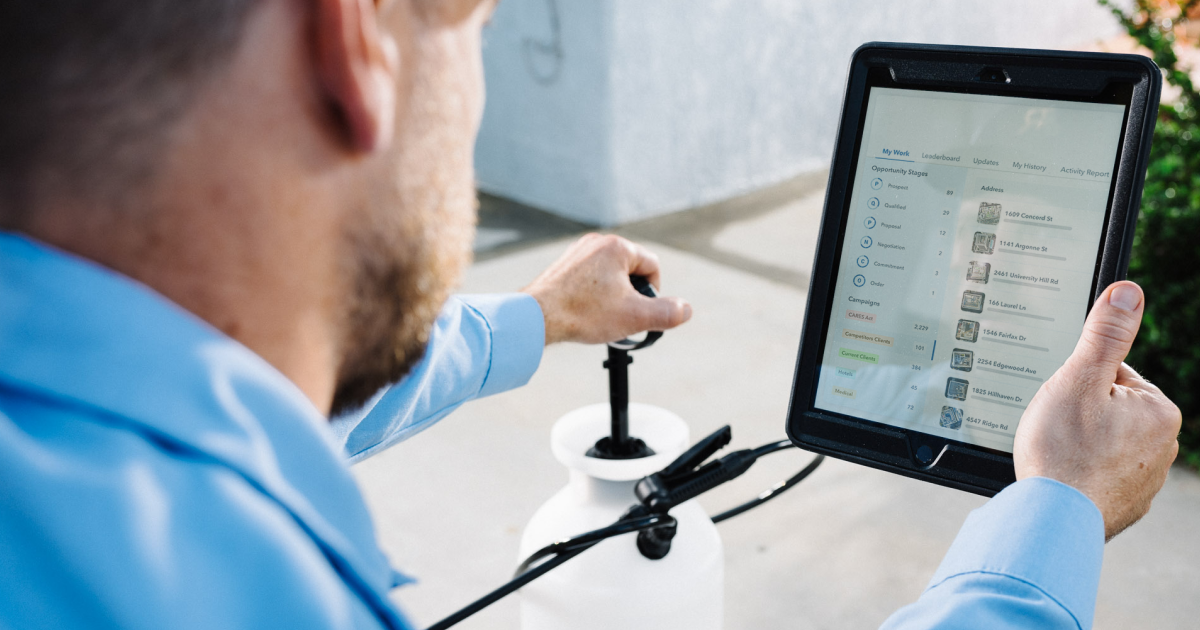Summary
The 90-Day Vendor Change Window is a timeline when commercial properties show peak interest in new service providers triggered by certain system failures, regulatory shifts, management changes, lease events, or contract renewals. Sales intelligence software with buying signals helps you identify when signal strength is the highest at the property level. Studies show that the right buying signals increase win rates by 43-50% and shorten sales cycles by up to 61%.
Introduction
Your field sales rep just spent 45 minutes on a perfectly crafted cold call. The facility manager listened, asked good questions, and even requested a follow-up meeting. Then, right as they're about to close, they drop the bomb: "This sounds great, but we just signed a three-year contract with your competitor last month."
Sound familiar?
Here's the frustrating reality: while your team is using traditional prospecting methods and making random calls, your competitors are timing their outreach to hit properties during the narrow windows when potential buyers are actively searching for a vendor. They're not just getting lucky - they're using sales intelligence software to identify property-level buying signals that reveal when these opportunities exist.
In this article, you’ll get an in-depth look into how modern commercial services teams use sales intelligence to identify the hidden 90-day windows when properties become receptive to new vendors, turning prospecting from a numbers game into a precision strategy.
Why Traditional Prospecting Feels Like Shooting in the Dark

When new reps get hired, one of the first things they hear is: "Plan on making 100-150 sales calls per week." This is not only time-consuming, but it’s also the starting point for “burnout.”
Then, they approach prospecting the same way most other commercial services sales reps do: grab a list of properties in their territory, start calling, emailing, and hope someone's in the market.
It's a volume game built on hope rather than intelligence.
But commercial properties don't operate on the same quotas and sales goals that our team does. They have their own timeline. They operate on fairly predictable cycles driven by specific triggers:
Contract renewal periods - Most service contracts run 1-3 years with specific renewal windows
Management changes - New property managers often reassess existing vendor relationships within their first 90 days
Permit activity - Building improvements trigger needs for complementary services
Lease events - New tenants moving in or major tenant changes create service opportunities
Regulatory changes - Updated codes or compliance requirements force equipment upgrades
Systems Schedules - maintenance, updated, and warranty requirements
The challenge? These signals are often buried in permit databases, property records, and other data sources that are either unavailable to local companies or take hours to research manually.
According to Salesforce's State of Sales research, sales reps (using traditional prospecting) spend just 28% of their time actually selling, with the majority consumed by non-revenue generating activities like research and data entry. By the time you identify the opportunity manually, your competitor may have already locked in the deal.
This is where sales intelligence software changes everything. Instead of hoping to catch properties at the right moment, you can identify almost exactly when they're entering their opportunity windows with what’s called signal strength.
The Science Behind Sales Intelligence with Property-Level Buying Signals
Sales intelligence is standard for most teams today, but traditional tools miss the signals that actually drive commercial services deals. They'll track organizational charts and leadership changes, but when a permit gets filed? Or when a property manager's HVAC system fails? These property-level signals are invisible to 95% of sales intelligence platforms.
Property-level buying signals are data points that indicate when a commercial property is likely to be open to new vendor relationships (aka, “hearing the sales pitch”). Unlike traditional lead scoring that focuses on website visits or email opens, these signals are based on real-world events that drive actual purchasing decisions.
What sets platforms like Convex apart from traditional tools is their ability to identify property-level signals that drive sales:
Traditional Buying Signals:
Downloaded a case study
Visited pricing page
Attended a webinar
Requested information
Property-Level Buying Signals:
Filed permits for HVAC improvements
New property management company took over
Major tenant signed lease requiring compliance upgrades
Existing service contract approaching renewal
Recent installations that trigger service or maintenance contracts
The key difference? Property-level signals indicate actual business need, not just research interest.
These signals fall into three categories:
Ideal Customer Profile (ICP) Fit Data:
Property characteristics that indicate a good potential fit:
Building size and type matching your ideal customer profile
Age of existing systems approaching replacement cycles
Property value suggesting available budget
Industry/tenant types that typically need your services
Owner-occupied or leased spaces
Building Opportunity Data
Events creating immediate service needs:
Recent permits indicating system upgrades
New property ownership or management
Tenant changes requiring space modifications
Regulatory compliance deadlines approaching
Decision-maker Intent Data
Research activity indicating active vendor evaluation:
Property-level decision-maker contact data
Online signals for service providers in their area
Escalating searches for topics that indicate genuine interest in making a purchase
Downloads of your industry reports and compliance guides
Visits to websites and engagement across your social media channels
Engagement with relevant trade publication content
Each of these is a signal, but when they’re combined, they create visibility into what the customer is actually looking for.
Understanding the 90-Day Opportunity Window

Research from commercial services sales teams reveals that most properties have a 90-day window when they're most receptive to vendor changes. This isn't arbitrary - it's driven by how commercial property decisions actually get made.
Harvard Business Review research shows that B2B buyers spend only 17% of their time meeting with potential suppliers during the decision process, making timing critical for successful engagement.
Here's why 90 days matters:
Days 1-30: Trigger Event Occurs
Signals show increasing strength
Permit filed, new manager hired, or contract renewal notice received
Initial research and budget discussions begin
Current vendor performance gets evaluated
Days 31-60: Active Vendor Research
RFP process initiated or informal bidding begins
Vendor meetings and proposals solicited
Budget approvals and decision-maker alignment
Days 61-90: Decision and Implementation
Final vendor selection made
Contracts negotiated and signed
Implementation timeline established
After 90 Days: Window Closes
New vendor relationship established
Multi-year contracts signed
Status quo locked in for next cycle
The magic happens when you can identify properties in that first 30-day window (or even earlier), before they've started serious vendor conversations. Hit them during days 31-60, and you're competing in an active RFP. Contact them after day 90, and you're asking them to break a fresh contract.
And people rarely change their minds once a decision is made.
This timing explains why random prospecting feels so inefficient. You're essentially playing a lottery where 75% of the tickets have already expired. Gartner research confirms that 99% of B2B purchases are driven by organizational changes, meaning buyers are motivated by specific triggers rather than random sales outreach.
Day-in-the-Life: Random vs. Signal-Based Prospecting

Let's compare how two HVAC sales reps approach the same Tuesday morning:
Jim: Traditional Prospecting Approach
Jim starts his day by pulling up his territory map and identifying 20 office buildings within a 10-mile radius. He's targeting properties with 50,000+ square feet because those typically have the budget for their company's commercial HVAC services.
His first call is to a prospect we’ll call “Metro Corporate Center.” He reaches the facility manager, explains his services, and gets this response: "We're happy with our current provider, but keep us in mind for next year." Strike one.
Call two, we’ll call them “Riverside Business Plaza.” "Not interested, we just renewed our service contract." Strike two.
By lunch, Jim has made 12 calls, reached 4 decision-makers, and scheduled zero meetings. He’s frustrated but figures that's just part of the game. Tomorrow, he'll call 20 more properties from his list.
Marcus: Signal-Based Prospecting Approach
Marcus opens his sales intelligence platform and checks his signals dashboard. He’s targeting three properties in his territory that are showing high signal strength this week:
Signal #1: Downtown Medical Center just filed permits for HVAC upgrades in their outpatient wing. The permit indicates a $2.3M project with completion targeted for Q2.
Signal #2: Tech Solutions Building has a new property management company as of last month. The new PM previously worked for a company that preferred Marcus's firm's preventive maintenance approach.
Signal #3: Manufacturing facility that just filed a permit to update their air quality system after receiving a notice of violation and have 60 days to implement corrective measures.
Marcus prioritizes the medical center because the permit timing suggests they're in the early research phase. He calls the facility manager and opens with: "I saw you're planning some significant HVAC improvements in your outpatient wing. We've helped three other medical centers in the area navigate similar projects while maintaining critical air quality standards during construction."
The conversation shifts immediately. Instead of a cold pitch about services they don't need, Marcus is discussing a project they're actively planning. The facility manager agrees to a site visit next week.
By 10:30 AM, Marcus has one confirmed meeting and two promising follow-up conversations. He'll spend the rest of his morning preparing for next week's site visit instead of making random calls.
The difference? Jim is hoping to find someone who might need HVAC services someday. Marcus is talking to people who definitely need services right now.
How Sales Intelligence Software Identifies These High-Conversion Sales Windows
Modern sales intelligence platforms combine multiple data sources to identify when properties enter their opportunity windows:
Property Intelligence and Building Data
Building permits for system upgrades, renovations, or expansions
Tenant occupancy changes
Property sales records showing ownership changes
Inspection reports revealing compliance issues
Business and Sales Intelligence
Management company changes that trigger vendor reviews
New tenant leases requiring space modifications
Corporate restructuring affecting property management decisions
Financial events like acquisitions that change vendor preferences
Buyer Intent Monitoring (this happens in the background)
Online research activity for relevant services in the property's market
Content downloads of industry reports and compliance guides
Website visits to competitor and vendor evaluation sites
Social media engagement with industry-relevant content
Integration with Sales Workflows and Outreach
Leading sales intelligence platforms like Convex also have CRMs built in to directly integrate with CRM systems like Hubspot, and Salesforce, and can be used alongside sales engagement tools to:
Automatically flag high-signal properties in territory maps
Generate personalized outreach templates based on specific signals
Set follow-up reminders aligned with opportunity timing
Track response rates by signal type to optimize future prospecting
Measurable Business Impact Across industries
With these core functions, it’s easy to see why sales teams using property-level intelligence report significant improvements that align with broader sales technology trends. If you look at the Siesmic/CSO Insights study on sales performance optimization, it shows that organizations using advanced sales intelligence tools consistently outperform those relying on traditional methods:
35-50% reduction in prospecting time due to better targeting
60-80% improvement in initial meeting conversion by timing outreach correctly
25-40% increase in deal size by engaging earlier in the decision process
90% reduction in "just signed with someone else" objections
One of these metrics alone would have a measurable impact on sales- combining all of them can drive a measurable impact on your bottom line.
Real-World Results: What Precision Timing Delivers
Johnson Controls Fire & Life Safety Case Study
The Challenge: Johnson Controls had strong technology for servicing existing accounts but struggled to penetrate "white space" opportunities in high-risk industries like healthcare, manufacturing, and education where they held modest market share.
The Solution: Director of Digital Solutions Emilie Gorzoch implemented Convex's Atlas platform to equip sales teams with property intelligence and buying signals instead of traditional cold calling approaches.
Implementation: Sales reps transitioned from spending entire days planning territory coverage to using Atlas for targeted prospecting in 1-2 hours per week, focusing on buildings with relevant fire and life safety needs.
Results After 8 Months:
$1.4M in incremental revenue generated
30% uplift in sales opportunities for Atlas users vs. non-users
90% reduction in planning time - from full days to 1-2 hours weekly
Enhanced lead quality with enriched building and contact data
Customer Impact: "The enhancement of enriched leads creates a faster turn-around time in the sales cycle and helps to drive our pipeline growth," explains Gorzoch. "The Convex platform really makes [sales reps] prepared before they make that first sales attempt. They have that additional information about the building and the people that work within those spaces."
Strategic Outcome: Johnson Controls transformed from reactive territory management to proactive market penetration, enabling sales reps to identify customers with outdated equipment and target high-value prospects more effectively.
If you’d like to read more about JC’s growth, click here to see the full case study.
Building Signal-Based Prospecting Into Your Process
Implementing signal-based prospecting requires more than just buying software—it requires rethinking how your team approaches territory management and lead qualification.
Phase 1: Signal Foundation (Weeks 1-4)
Set up your intelligence infrastructure:
Choose a sales intelligence platform with property-level data coverage in your markets
Define your ideal customer profile based on property characteristics
Establish signal priorities based on your service offerings and sales cycle
Integrate with your existing CRM and sales engagement tools
Train your team on signal interpretation:
How to read permit data and understand project scope
Recognizing management change indicators
Understanding regulatory compliance in your area for timing purposes
Use Convex’s Generative AI to translate signals into relevant talking points for outreach
Phase 2: Process Integration (Weeks 5-8)
Rebuild your prospecting workflow:
Replace random territory calling with signal-driven target identification
Create messaging templates for different signal types (or use Convex with offers them pre-built into Engage)
Establish follow-up cadences based on opportunity timing
Track alerts for new high-priority signals
Develop signal-specific talk tracks and messaging:
Permit signals: "I saw you're planning improvements to..."
Management changes: "As you evaluate current vendor relationships..."
Compliance signals: "With the new regulations taking effect..."
Renewal signals: "As your current contract approaches renewal..."
Phase 3: Optimization and Scale (Weeks 9-12)
Refine based on early results:
Analyze response rates by signal type and adjust prioritization
Fine-tune territory coverage based on signal density
Optimize messaging based on conversation outcomes
Scale successful approaches across your entire team
Establish performance metrics:
Signal-to-meeting conversion rates
Average deal size by signal type
Sales cycle length for signal-driven vs. traditional prospects
Overall pipeline velocity improvements
Ongoing Management
Weekly signal review:
Monitor new high-priority signals in your territory
Update prospect research based on latest property activity
Adjust outreach timing based on signal evolution
Coordinate with team members to avoid duplicate outreach
Monthly optimization:
Review signal performance and adjust scoring criteria
Update ideal customer profiles based on closed deals
Refine messaging templates based on successful conversations
Analyze competitive intelligence from signal sources
Quarterly strategic planning:
Assess territory coverage and signal density
Evaluate new signal sources and data providers
Update sales process based on market changes
Plan territory expansion based on signal opportunities
Conclusion
The days of spray-and-pray prospecting are over. While your competitors are still making random calls hoping to find someone in the market, you can be having consultative conversations with properties that are actively evaluating vendors.
Property-level buying signals reveal the hidden timing that drives commercial services purchases. When you can identify the 90-day windows when properties become receptive to new vendors, prospecting transforms from a numbers game into a precision strategy.
The most successful commercial services teams aren't the ones making the most calls- they're the ones making the right calls at the right time. Sales intelligence software gives you the visibility to see these opportunities before your competition does.
Ready to stop playing the prospecting lottery? Schedule a demo of Convex to see how property-level intelligence can help you identify the high-value opportunities in your territory and engage them at exactly the right moment.
Share





